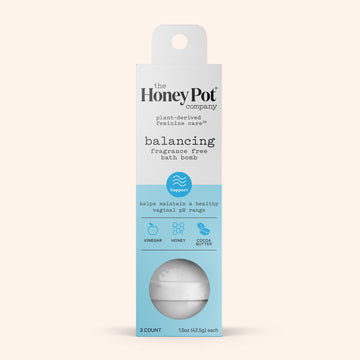
Education
Is Your Period Ruining Your Life?
There are a number of reasons why “that time of the month” is widely dreaded but pain is chief of them all. Painful periods are the most common gynecologic problem in humans who menstruate, with rates up to 90% (Nasir, 2004). For centuries, painful periods have been normalized by society and the medical community at large. This has resulted in people refraining from seeking medical care.
Thankfully, pain during menses is now recognized and assigned the term dysmenorrhea. It is helpful to use this term when communicating with healthcare providers. This can foster shared decision-making and the use of evidence-based treatments that are now available.
Dysmenorrhea, which typically begins soon after puberty, is a common reason for missing school, work, and social, academic, and athletic events. Given the undesirable but significant impact of dysmenorrhea, let’s explore the condition more.
TYPES OF DYSMENORRHEA
There are two types of dysmenorrhea: primary and secondary. Primary dysmenorrhea is menstrual pain without structural or anatomical conditions.
When the pain has associated symptoms, such as abnormal bleeding patterns, pain with intercourse, pain when not on your cycle, or one-sided pain, this suggests there may be underlying causal pathology. Painful menstrual periods that are caused by pelvic abnormality are known as secondary dysmenorrhea.
PRIMARY DYSMENORRHEA
You may be saying to yourself, “Well, slow down, Doc! How do I know what type of dysmenorrhea I have?” Well, the typical symptoms of primary dysmenorrhea include lower abdominal or pelvic pain that may or may not radiate to your lower back or thighs.
This crampy pain usually begins right before or during bleeding and lasts two to three days. This pain is caused by the release of substances, including prostaglandins and vasopressin, at the time of menses, which lead to uterine contractions. These contractions are felt by the body as crampy pain.
Although this condition is diagnosed clinically, your health provider may rule out pregnancy and/or infection. In addition, if sexually active, your provider may conduct a bimanual pelvic exam. If your provider opts not to do any of these, this approach is not necessarily wrong, as the condition is diagnosed by clinical acumen.
SECONDARY
Secondary dysmenorrhea requires a detailed evaluation because treating the underlying issue is the best approach to treating the pain. Unfortunately, the physiology of pain is quite complex.
In my experience as a gynecologic surgeon, surgical procedures don’t always resolve pain. Surgery simply resolves anatomy. This can be a source of frustration to the surgeon and patient alike. Surgery is a “buyer beware” approach when dealing with pelvic pain and should be used judiciously.
Endometriosis is the most common cause of secondary dysmenorrhea. It is most commonly diagnosed in ages 25-29. Although studies show that Black women have 40% lower incidence of endometriosis than white women (Osayande, 2013), practitioners believe that endometriosis, like other pain conditions, is underreported and underdiagnosed in Black women. Other causes include adenomyosis, fibroids, interstitial cystitis & chronic pelvic pain syndrome. Paradoxically, uterine cancer rarely produces pain.
ENDOMETRIOSIS
Endometriosis is a condition characterized by cells and tissues that are normally located in the lining of the uterus (womb) and are entirely outside of the uterus. These cells respond to the hormonal signals the body gives during menstrual cycles.
Consequently, humans with this condition have pain on and off menses, with intercourse, when urinating and/or defecating. In addition, this condition is associated with infertility or subfertility.
When examined by a gynecologist, there can be findings of a uterus retroverted (tilted to the back), retroflexed (stuck down towards the back), fixed, and immobile. In addition, there may be cysts in the ovary called endometrioma or nodules on ligaments close to the rectum.
Imaging like transabdominal/vaginal ultrasounds and magnetic resonance imaging (MR) can be useful in establishing the diagnosis. Currently, a definitive diagnosis is only done via surgery using a laparoscope (a small camera inserted via the abdomen into the pelvis).
When a diagnostic laparoscopy is performed, biopsies of visible lesions are taken and examined under a microscope. If endometrial tissue is visualized outside of the uterus, a definitive diagnosis is made.
If your gynecologist suspects endometriosis and you make a shared decision not to perform surgery, your physician may employ a regimen that treats endometriosis-like pain. They may also refer you to a pelvic floor physical therapist and/or a pelvic floor pain specialist.
Endometriosis may affect the bowel and/or the bladder. If you have gastrointestinal or urinary symptoms, your gynecologist may involve a Gastroenterologist or Urologist in your care.
ADENOMYOSIS
Adenomyosis is similar to endometriosis as it involves endometrial tissue found outside of the lining of the uterus. In this case, however, endometrial cells are found in the lining of the uterus rather than outside the uterus.
A typical person with adenomyosis tends to have painful, heavy periods that usually is persistent and increase in intensity on a crescendo pattern. On physical exam, the uterus tends to be uniformly large, unlike fibroids, which tend to have an irregular contour.
Ultrasound and MRI are useful in this diagnosis. However, a definitive diagnosis is made after the uterus is removed in a hysterectomy and the tissue is viewed under a microscope.
Adenomyosis is a complex condition to treat. Currently, the only definitive treatment is a hysterectomy.
OTHER CAUSES OF PAINFUL PERIODS
Although endometriosis and adenomyosis comprise a big portion of the causes of secondary dysmenorrhea, there are some other significant conditions that result in similar outcomes.
These include:
- fibroids
- interstitial cystitis
- chronic pelvic pain syndrome
- pelvic inflammatory disease
If secondary dysmenorrhea is suspected or diagnosed, comprehensive management by a qualified gynecologist is recommended.
What Is the Medical Approach to Painful Periods?
When it comes to combating the discomfort of dysmenorrhea, the medical community has developed a suite of strategies aimed at reducing pain and improving the quality of life for those affected. Let's explore some of these approaches, diving into how they specifically target menstrual pain and related symptoms.
Birth Control
Hormones can be game-changers in the battle against menstrual cramps. Birth control pills juggle your body's hormone levels, often leading to lighter and less painful menstruation. It's like telling your uterus to chill out on the whole cramp front, giving you a breather from the monthly turmoil.
IUD (Intrauterine Device)
Now, for some, the idea of an IUD might bring up visions of a sci-fi movie, but trust us, it's far from that. A hormonal IUD is a tiny device your doctor places inside your uterus, and it works its magic by releasing hormones locally. Think of it as a peacekeeper in the land of uterine contractions, keeping the peace and quiet for up to five years.
NSAIDs (Nonsteroidal Anti-inflammatory Drugs)
NSAIDs, or nonsteroidal anti-inflammatory drugs, are the special ops of the period pain reliever world. Ibuprofen and naproxen, for instance, go straight to the source of the pain, blocking those pesky prostaglandins that are behind the cramps. Timing is everything, though; starting a day or two before your period and continuing for a couple of days can keep the crampy chaos at bay.
Supplements
Mother Nature's got your back, too, with supplements that pack a punch against period pain. Magnesium for muscle relaxation, Vitamin B1 for energy, and Omega-3s for inflammation — think of it as a wellness cocktail for your reproductive organs. Always have a chat with your OB before starting any new supplement, though, to make sure it's the right mix for you.
Surgical Interventions
In cases where underlying medical conditions like endometriosis or fibroids are crashing your period party, surgery might be on the table. It's not the first line of defense but more of a strategy for when you need to bring out the big guns.
Tips To Support a Happy and Healthy Period
Navigating menstrual health involves embracing practices that make your entire cycle more bearable, maybe even good. So, how do you turn the tide on menstrual misery?
Here are some life-tested tips to keep you and your period on the best of terms:
Track Your Cycle
Knowledge is power, especially when it comes to understanding your menstrual cycle. Use a period tracker app or simply mark your calendar. Not only does this help predict your next period, but it also clues you into your body's unique rhythm, helping you prepare for what's ahead.
Stay Active
Exercise might be the last thing on your mind when you're cramping, but moving your body can actually ease menstrual pain. Yoga, walking, or any form of light cardio increases blood flow and releases endorphins, your body's natural painkillers. Just keep it gentle — now's not the time for intense HIIT sessions.
Hydrate and Nourish Your Body
Drink plenty of water and eat a balanced diet rich in fruits, vegetables, and whole grains. Staying hydrated helps alleviate bloating and exhaustion, while certain foods can naturally ease menstrual discomfort. Think about incorporating foods high in magnesium, calcium, and omega-3 fatty acids.
Embrace the Power of Heat
A warm bath or a heating pad can be soothing for cramps. The warmth helps relax your muscles and increase blood flow, reducing pain. For an on-the-go solution, consider using heat patches that discreetly stick to your clothing.
Prioritize Sleep
Getting enough ZZZs is crucial during your period. Your body is working overtime, so give it the downtime it needs. Create a cozy, comfortable sleep environment and try to maintain a regular sleep schedule.
Reduce Stress
Stress can worsen menstrual symptoms, so finding effective ways to unwind is key. Meditation, deep breathing exercises, or simply taking time for activities you enjoy can make a big difference in how you feel.
Consider Herbal and Natural Remedies
For those seeking a gentler approach, herbal teas like chamomile or ginger can be comforting. Supplements such as evening primrose oil or chasteberry might also offer relief, but check with your healthcare provider first.
Honey Pot's Soothing Solutions
Our herbal-infused solutions are designed with your comfort in mind. From our soothing period products to our gentle washes, incorporating The Honey Pot into your period care routine can make a world of difference.
Our pads, in particular, are infused with safe essential oils that provide a cooling sensation, helping to ease discomfort and keep you feeling fresh. What’s not to love?
Limit Caffeine and Alcohol
While you might crave coffee or a glass of wine, caffeine and alcohol can exacerbate menstrual symptoms like bloating, breast tenderness, and mood swings. Try cutting back and notice if it makes a difference in how you feel.
Regular Check-Ups
Stay on top of your reproductive health with regular visits to your healthcare provider. These check-ups are a chance to discuss any new or worsening symptoms and to ensure your menstrual pain isn't a sign of a more serious condition.
Listen to Your Body
Finally, remember that you're the expert on your own body. If something feels off, or if the pain becomes too much to handle, seek medical attention. There's a range of options available to help manage menstrual pain, from lifestyle adjustments to medical treatments.
BOTTOM LINE
Although many of us in the hive have painful periods, they are not normal! In fact, they may be a window into a developing condition and should be investigated. Cheers to pain-free periods.
Sources:
What Are the Benefits & Advantages of Birth Control Pills? | Planned Parenthood
Yoga Exercises and Period Cramps | Nationwide Childrens.gov
Prior stress could worsen premenstrual symptoms | NIH
The relationship between alcohol consumption and menstrual cycle | PMC
REFERENCES
Proctor M, Farquhar C. Diagnosis and management of dysmenorrhoea. BMJ. 2006;332(7550):1134-1138
Nasir L, Bope ET. Management of pelvic pain from dys- menorrhea or endometriosis. J Am Board Fam Pract. 2004;17(suppl):S43-S47.
Ying Gyo et al. Complenentary and Alternative Medicine for Dysmenorrhea casued by endometriosis: A review of Utilization and mechanism. Evidence Based Complementary and Alternative Medicine; 2021.
Osayande, A., Mehulic, S.. Diagnosis and Initial Management of Dysmenorrhea. Amer Fam Physician. March 1, 2014. Vol 89, Number 5 341-326






